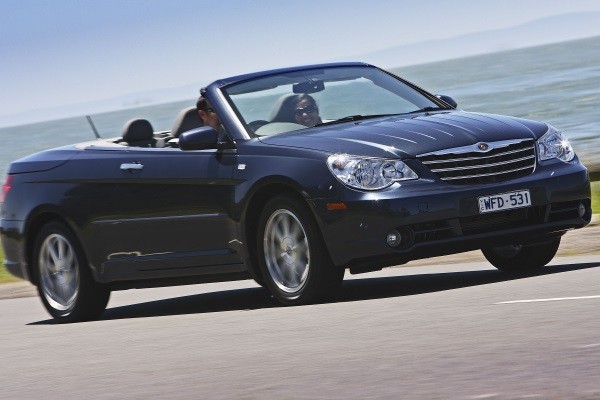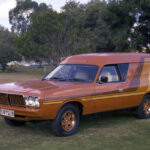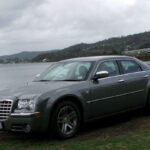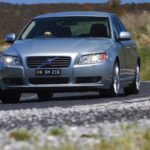The family car market in Australia is totally dominated by Holden Commodore and Ford Falcon, but from time to time other marques have a go at creating competition, usually without a great deal of success.
The Ford Taurus was soundly beaten by its cousin Ford Falcon during the 1990s. Chrysler had a fair bit of success years ago with the Valiant but it faded when Mitsubishi took control of the South Australian operation. Chrysler, now under control of its head office in the USA, had another bash at the market with the Sebring from the year 2007 and it’s the subject of this Used Car Checkout.
In a smart move, the Sebring came to Australia only in the topline variants as Chrysler was keen in giving it an upmarket image to lift it away from everyday competitors from Holden and Ford. However, the used of front-wheel-drive meant that it was lifted from its competitors in exactly the wrong way – perhaps we should say it ‘dropped’ from its competitors. Aussies do like their big cars to be driven from the rear.
Chrysler Sebring four-door sedans were introduced in May 2007, followed by the convertible, often tagged as a ‘cabriolet’ to give it a European image in December that year. The cabriolet is unique in that it can be bought with either a traditional soft-top or a folding metal roof.
The sedan is offered in Sebring Limited or Sebring Touring variants. The tag ‘Touring’ is often used by other makes to denote a station wagon, but is a sedan.
Interior space in the sedan is good and the rear seat can cope with two larger than average adults, three children will travel in comfort. All seats except for the driver’s can be folded flat to make for plenty of carrying capacity, including long loads. Boot space is good – always an advantage of a front-drive car – and the luggage area is easy to access thanks to a decent sized opening.
All sedans until January 2008 had a 2.4-litre petrol engine that provides, at best, adequate performance. A V6 petrol engine displacing 2.7 litres became optional at the start of 2008 and is a much better bet.
The added weight of the cabriolet body (due to the need for underbody strengthening) meant that only the petrol V6 engine is imported to Australia. It has decent performance so is worth hunting down if you’re looking for something really different.
Another advantage of the V6 engine is that it sits beside a six-speed automatic transmission, whereas the four-cylinder powerplant only has four forward ratios.
A 2.0-litre turbo-diesel with a six-speed manual gearbox was imported from the introduction of the Sebring in 2007. It was withdrawn due to a serious lack of buyer interest less than a year later.
Though Chrysler boasts the Sebring sedan has semi-European steering and handling to give it a sporting feel, it’s on the soft side for Australian tastes. In its favour, it provides good riding comfort.
On-road, the dynamics of the Sebring cabriolet are better than those of the sedan and are likely to suit all but the most demanding of sporting drivers. Then again the ride is firmer and may not be to all tastes. Compromise, compromise…
Chrysler Sebring sedan was discontinued in 2010, and as a cabriolet early in 2013. Though it’s a larger car than the Sebring, the Chrysler 300C is doing well in this country and some previous Sebring buyers have switched across to it.
Build quality of the Chrysler Sebring could be better, particularly in the interior where it lags significantly behind that of Asian and Australian made family cars. Then again, the materials are of a good standard and seem to be wearing well enough.
The Chrysler dealer network operates efficiently and we have heard of no real complaints about spare parts availability or price. Most of the Chrysler dealers are in Australian metropolitan areas, but some of the major country cities and towns also have representation. These days Chrysler is controlled by Fiat and is undergoing a resurgence in Australia.
Insurance costs are slightly above average for cars in this class, but not unreasonably so. There seems to be a difference of opinion amongst insurance companies about premium charges, probably because the Sebring has yet to build up a comprehensive history here. So it pays to shop around for the best deal. As always, make sure you are doing an exact comparison between insurers.
WHAT TO LOOK FOR Build quality can be on the variable side so get a professional inspection before buying.
A service record from an official dealer is always an asset.
The added safety of tyre pressure monitoring in the dashboard is handy, but make sure the system is operating correctly as we have heard reports of incorrect or no readings.
Check the complete interior for signs of items that aren’t fitted correctly. During your pre-purchase test drive listen for squeaks and rattles that indicate insecurity.
The four-cylinder engine isn’t as smooth as the six-cylinder but both powerplants are pretty good in this field. Any roughness, most likely to be noticed when the engine is started from cold, should be treated with suspicion.
A diesel shouldn’t be overly noisy, though it’s not the best engine in a field that’s dominated by the new-tech European units.
Slow gearchanges in the four-speed automatic transmission could indicate the need for a service. We haven’t struck any problems in the six-speed auto.
Panel repairs that haven’t been correctly carried out will show up as roughness in the body shape. This is best spotted by looking along the panels for a ripply finish. Do this in strong daylight.
Check the operation of the roof on a convertible. Also the condition of the seals.
HOW MUCH? Expect to pay from $7000 to $11,000 for a 2007 Chrysler Sebring Touring; $9000 to $14,000 for a 2007 Limited; $11,000 to $16,000 for a 2007 Touring Cabrio or a 2008 Limited; $14,000 to $20,000 for a 2010 Limited; $16,000 to $23,000 for a 2010 Limited Cabrio; and $19,000 to $27,000 for a 2013 Touring Cabrio.
CAR BUYING TIP Check on the availability of spare parts and service before committing to a car that may become an orphan in the future.












